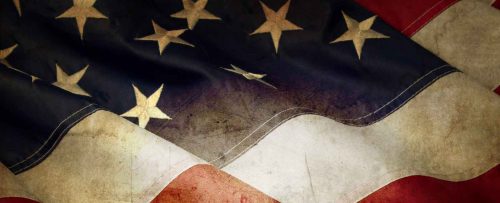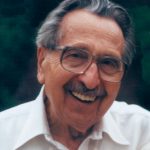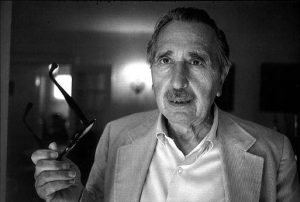
CWP Blog | CWP
Discussions with Deb: Dr. Thomas Mancuso, An American Hero
May 8, 2018
May 8, 2018
CWP
CWP Blog
By Deb Jerison, CWP Worker Advocate
Before the Energy Employees Occupational Illness Compensation Program (EEOICPA) could be enacted by Congress it needed to be shown that the work done by the nuclear weapons workers was dangerous and damaging to them. Many people contributed to this body of evidence, without which EEOICPA could never have happened. Dr. Thomas Mancuso was one of the people whose work made EEOICPA possible.
Thomas Mancuso was an occupational medicine doctor and epidemiologist. He pioneered some of the methods that epidemiologists now use routinely, including using Social Security data to track workers over a period of time. In the 1950s when most occupational medicine studies were conducted by industry, he began studying workers and the chemicals they are exposed to from the workers’ perspective. He published papers linking aromatic amine exposure to bladder cancer, beryllium and hexavalent chromium, and asbestos to mesothelioma.

In 1964, while on the faculty of the University of Pittsburgh’s School of Public Health, he was awarded a contract by the Atomic Energy Commission (AEC) to study whether exposure to radiation increased the risk of cancer and death in workers at US nuclear weapons plants. Previously to being awarded the contract for the study, Dr. Mancuso had been named as one of the US top researchers by the National Cancer Institute.
This was to be a huge study of around 300,000 workers which would take many decades to complete since many cancers have a long latency period. It took Dr. Mancuso fourteen years just to build the data system containing workers’ death certificates and social security data information.
The AEC motives for funding The Health and Mortality Study were not pure. Brian MacMahon, of the AEC stated, “Much of the motivation for starting this study arose from the ‘political’ need for assurance that AEC employees are not suffering harmful effects.” Many in the AEC viewed the study as a public relations sham and some even referred to it as “Mancuso’s folly”. The AEC expected it would prove that radiation was not harming the workers.
In 1974 Dr. Samuel Milham, a Washington State Department of Social and Health Services epidemiologist, found evidence that radiation was making nuclear weapons workers sick. The AEC urged Dr. Mancuso to publish a report refuting this. He refused because he felt that due to the latency of some cancers it was too early to publish any of his findings and because he knew Milham was a reliable researcher. Dr. Sidney Marks, Mancuso’s contract officer for the AEC, requested that Mancuso endorse a draft press release which stated “there is no evidence of cancer or other deaths attributable to ionizing radiation occurring more often among Hanford workers.” Again, Dr. Mancuso declined. The AEC officer overseeing the Mancuso studies wrote “unless an immediate replacement (for Mancuso) is found, a public charge may be made that the AEC is stopping the program out of fear that positive findings will emerge”.
Following Dr. Milham’s resea rch the AEC contracted with Battelle at Pacific Northwest Laboratories to reassess the study’s findings. When the reassessment was completed they agreed with Milham that radiation was making the workers sick even at the so-called “safe” radiation limits of the time. The Battelle study was then buried.
rch the AEC contracted with Battelle at Pacific Northwest Laboratories to reassess the study’s findings. When the reassessment was completed they agreed with Milham that radiation was making the workers sick even at the so-called “safe” radiation limits of the time. The Battelle study was then buried.
By 1977 the Mancuso study was showing links between low-dose radiation and worker illness and death. He published his results, Radiation Exposures of Hanford Workers Dying from Cancer and Other Causes in Health Physics, much to Department of Energy’s (DOE) dismay.
The DOE cancelled Dr. Mancuso’s contract. He was able to find some additional funding and also used some of his retirement savings to continue. He asked Dr. Alice Stewart and statistician George Kneale to review his data and findings.
In 1977 Mancuso, Stewart and Kneale published their study, Study of the lifetime health and mortality experience of employees of ERDA contractors. (ERDA was the name of the agency between AEC and DOE.) This study showed a definite relationship between low level ionizing radiation and the development of cancer.
After this, Mancuso requested copies of his data from his Oak Ridge research, including his own research papers. DOE refused and went out of their way to defame the study and Dr. Mancuso’s reputation.
After the end of the study, Dr. Mancuso said, “Of course it makes me angry, because this is not just a moral principle, but also a scientific one. From the scientific point of view, it is outrageous, I think. They knew that I had found what I was looking for in the Hanford study, and they were clearly afraid that if I kept digging, they would discover even more significant problems in the AEC facilities.”
For years the AEC, Energy Research and Development Administration (ERDA), and later the Department of Energy (DOE), disputed his findings. However, Dr. Mancuso has been totally vindicated and the data from his studies are now available to the public at DOE’s Comprehensive Epidemiologic Data Resource website.
Dr. Mancuso died in 2004 at the age of 92.
